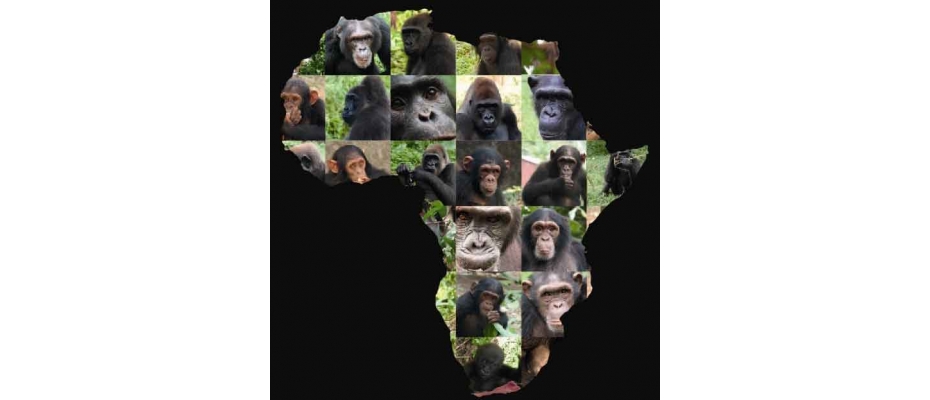
A new study by an international team of researchers has, for the first time, sequenced the genomes of a large number of Great apes from across Africa and South-East Asia. The work, lead by Dr. Tomas Marques Bonet of the Institut de Biologia Evolutiva (IBE) of the Universitat Pompeu Fabra and the CSIC and Dr Evan Eichler of the University of Washington focused on characterizing as much wild genetic diversity as possible from the worlds rapidly dwindling great ape populations. Great apes are a group of species made up of humans and our closest relatives, chimpanzees, gorillas and orangutans. These species all share a common ancestor about 14-16 million years ago, but chimpanzees, for example diverged from humans much more recently, ~6 million years ago.
“It’s important to learn about the genetic diversity of great apes in order to put the history of our own genomes into context,” says Peter Sudmant of the University of Washington, who co-first authored the paper, which is published in the journal Nature. The study provides one of the most detailed and comprehensive analyses of genetic diversity of wild-born great apes to date—species which are now all considered endangered.
Exploring genetic diversity
The latest generation sequencing technologies available at the Centro Nacional de Análisis Genómico (CNAG) allowed researchers to learn an enormous amount about human genomes and genetic diversity by sequencing individuals of our own species. In contrast however, far less attention has been focused on our great ape relatives. This is largely due to the difficulty in obtaining DNA samples from these endangered species. Though many apes exist in captivity, these individuals are a poor reflection of wild diversity. The researchers instead tried to gather material from wild born individuals working internationally with conservation groups and researchers. “A project of this ambition and volume is exactly what the CNAG was set up to take care of correctly” says Ivo Gut, director of the CNAG.
The researchers found that human genomes show relatively little variation between each other in comparison to most great apes. Few ape species are as shallow as human when it comes to genetic diversity. “This reduction in genetic diversity is commonly the result of an event called a population bottleneck.” says Javier Prado-Martinez, a researcher from IBE who co-first authored the study. “What’s striking is how severe this bottleneck must have been in ancestral humans in comparison to most great apes.” The genomes of a pair of orangutans, for example differ at more than 2 out of every 1000 base-pairs, compared to 1 out of every 1000 base-pairs between any two humans. A few species of great apes, however, were more similar to humans in that they showed a dearth of genetic variation; namely Eastern lowland gorillas, Western chimpanzees and bonobos. All of these species showed evidence of severe bottlenecks in their ancient history possibly explaining the reduced genetic diversity.
Four populations related to each other
The researchers focused particularly on the comparing the evolutionary history of our closest relatives, chimpanzees, who are dispersed across Africa and classified into four major groups, or, subspecies. An open question among evolutionary biologists has been how these four populations relate to one another. By sequencing multiple individuals from each group, the researchers were able to resolve the phylogenetic relationship among these subspecies distinguishing two genetically distinct groups of chimps. What also became apparent to the researchers was the complexity of the evolutionary history of chimps compared to humans. The patterns of genetic diversity were consistent with extensive gene flow or migration between ancestral populations with sudden expansions in population size followed by crashes.
“Humans”, in contrast “have a relatively simple evolutionary history,” says Sudmant. “It’s clear that over the last few million years chimpanzee populations fluctuated enormously in size and complexity.” The basis for these population collapses is unclear but does coincide, in part, with a period of time when human populations began to thrive.
Work of reference:











